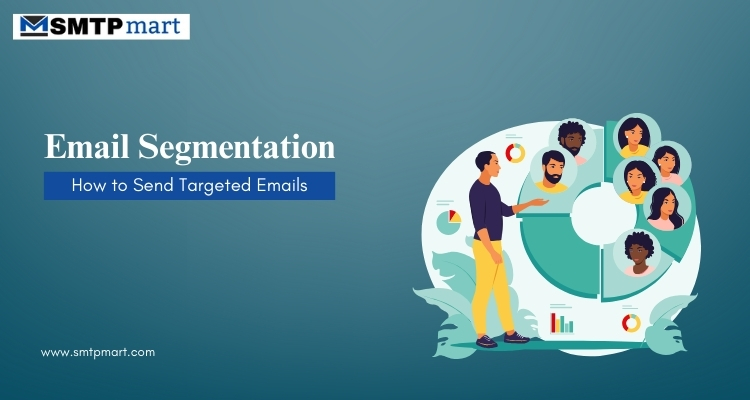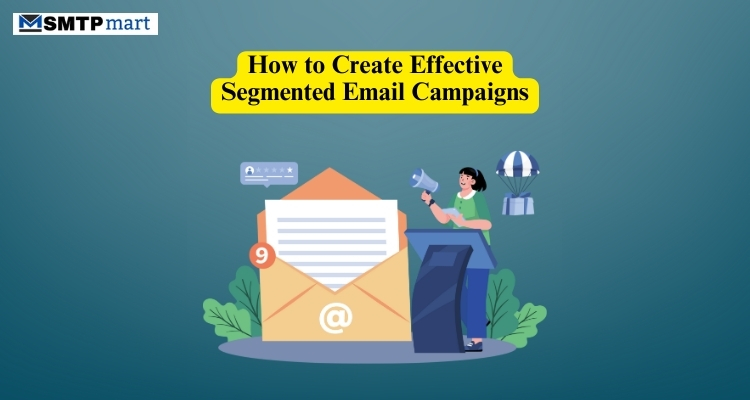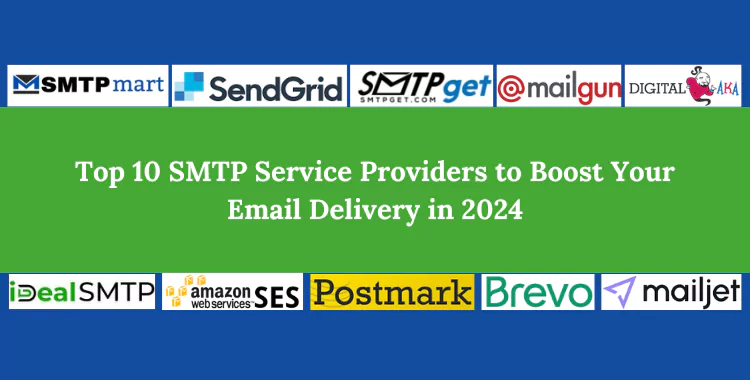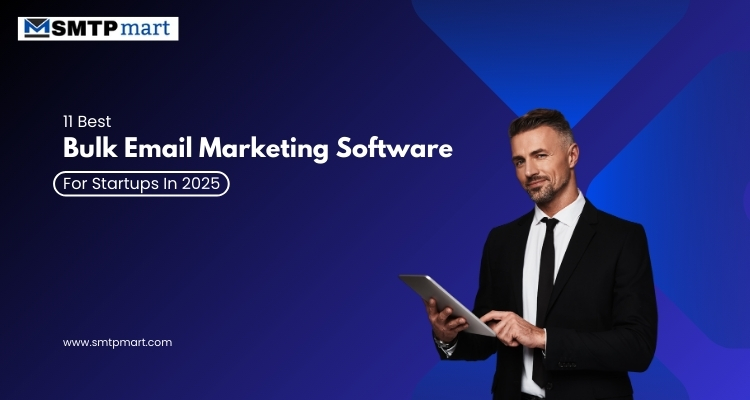Email segmentation is an important strategy that helps businesses make their email campaigns more effective. Instead of sending the same email to everyone, businesses can divide their email list into smaller groups based on things like interests, location, or past purchases. This way, they can send emails that feel more personal and useful to each group, making people more likely to open and read them.

In this guide, we will explain why email segmentation is important and how it can help businesses improve their email marketing. We will also share the best ways to use email segmentation and different strategies that can make emails more successful. By using segmented email campaigns, businesses can build stronger relationships with customers and get better results.
What is Email Segmentation?
Email segmentation is a way for businesses to divide their email list into smaller groups based on certain details. Instead of sending the same email to everyone, businesses can send different emails to different groups. This makes emails more interesting and useful for the people receiving them.
There are many ways to segment an email list. Businesses can group people based on their age, location, or interests. They can also look at past purchases, how often someone opens emails, or whether they have clicked on links inside emails before. By organizing email lists this way, businesses can send messages that match what each group cares about the most.
A good email list segmentation strategy helps businesses connect better with their customers. When people receive emails that are relevant to them, they are more likely to read them, click on links, and even make purchases. This can lead to more sales and help businesses keep their customers happy for a long time.
Pricing-
| Pricing | Cheapest plan | Premium Plan | Cluster Plan |
| SMTP Server Services | $97 / month | $153/ month | $342/ month |
| Bulk Email Services | $25 / month | $150/ month | $350/ month |
The Importance of Email Segmentation
Here’s why email segmentation is so useful:
1. More People Open Emails – When emails feel personal, people are more likely to open them. If someone gets an email that speaks to their needs or interests, they will want to read it.
2. More People Click on Links – If an email contains useful content, such as special offers or helpful tips, people will be more likely to click on links inside the email. This helps businesses get more engagement.
3. More Sales and Sign-Ups – When people receive emails that match their interests, they are more likely to buy something or sign up for a service. Segmenting email lists helps businesses send the right offers to the right people.
4. Fewer People Unsubscribe – If someone keeps getting emails that don’t interest them, they might unsubscribe. But if businesses send relevant content, people are more likely to stay on the email list.
5. Better Customer Relationships – When businesses send useful and interesting emails, customers feel valued. This helps build trust and long-term relationships.
Email Segmentation Strategy: How to Segment Your Email List
Below are some of the best ways to segment an email list:

1. Segmentation Based on Demographics
Demographic segmentation means grouping subscribers by personal details like age, gender, location, job, or income level. For example, a clothing brand might send different emails to men and women, or a company selling business software might target emails to professionals in certain industries. By using an effective email segmentation strategy, businesses can ensure their emails feel more relevant to each group, leading to higher engagement and better results.
2. Segmentation Based on Behavior
Behavioral segmentation focuses on how customers interact with a business. This includes:
- Past purchases: Sending product recommendations based on what customers bought before.
- Browsing history: If a customer looks at a product online but doesn’t buy it, they can receive an email about it.
- Email engagement: Sending special offers to people who open and click emails often.
- Cart abandonment: Send reminders to people who added items to their cart but didn’t complete the purchase.
3. Segmentation Based on Engagement
People engage with emails in different ways. Businesses can group subscribers into:
- Highly engaged subscribers who open and interact with emails often.
- Inactive subscribers who haven’t opened emails in a long time may need a re-engagement campaign.
4. Segmentation Based on Location
Businesses that serve different areas can send emails based on a subscriber’s location. This helps tailor messages to fit time zones, seasons, or local events.
5. Segmentation Based on Purchase History
If a customer has bought something before, they might be interested in similar products. Businesses can send recommendations and special offers based on past purchases.
6. Segmentation Based on Interests and Lifestyle (Psychographics)
This type of segmentation focuses on people’s hobbies, interests, and values. For example, a fitness brand might send different emails to yoga lovers and weightlifters. Personalizing emails this way makes them more interesting and engaging.
Benefits of Email Segmentation
Here are some key benefits of email segmentation:

1. More Personal Emails
When people receive emails that match their interests, they are more likely to read them. For example, if a customer buys sports shoes, they might want to receive emails about new sports gear instead of unrelated products. Sending relevant emails makes customers feel valued and improves their experience.
2. Higher Sales and Profits
Segmentation email campaigns usually lead to more people taking action, such as buying a product or signing up for a service. When emails are personalized, people feel more connected to the brand and are more likely to make a purchase. This means businesses can make more money from their email campaigns.
3. Better Email Delivery
When emails are useful and relevant, people are less likely to mark them as spam. This improves email deliverability, meaning more emails reach inboxes instead of being blocked or sent to the spam folder. This helps businesses communicate with their audience effectively.
4. Easier to Track and Improve
With email segmentation, businesses can see which groups of customers respond best to their emails. This helps them understand what works and what doesn’t. By analyzing data, businesses can improve their future email campaigns and get even better results.
Email Segmentation Best Practices
To make email marketing more successful, businesses should follow some simple and effective email segmentation practices. These steps help send the right emails to the right people, improving engagement and results.
1. Collect the Right Information
To create useful email segments, businesses must gather important details about their subscribers. This includes information like age, location, interests, and past purchases. You can collect this data through sign-up forms, surveys, and website tracking. The more useful information you have, the better you can group your audience.
2. Keep Your Email Lists Updated
Email segmentation is not something you do just once. People’s interests and behaviors change over time, so it is important to update your email segments regularly. If a customer starts buying a different type of product or stops opening emails, they might need to be placed in a different segment.
3. Make Emails Personal
Personalized emails make people feel special. Using the recipient’s name and sending content based on their interests can increase engagement. For example, if someone buys shoes from your store, you can send them emails about similar products instead of random offers.
4. Check Results and Improve
Always monitor how your segmented email campaigns are performing. Look at key metrics like how many people open your emails, click on links, or make purchases. If a segment is not responding well, adjust your strategy and test different approaches.
5. Don’t Make It Too Complicated
While segmentation is great, dividing your audience into too many small groups can be difficult to manage. It can take too much time and effort. Find a balance that allows you to send relevant emails without making the process too complex.
How to Create Effective Segmented Email Campaigns
Creating a good segmented email campaign means sending the right emails to the right people. To make your campaign successful, follow these simple steps:

1. Set a Clear Goal
Before you start, decide what you want to achieve with your emails. Do you want more people to buy a product, sign up for a service, or read your blog? Having a clear goal helps you create the right message for each group of subscribers.
2. Use Catchy Subject Lines
The subject line is the first thing people see. If it is interesting and personal, more people will open your email. Try using the person’s name or something relevant to their interests. For example, “John, Here’s a Special Offer Just for You!”
3. Send Relevant Content
Make sure your email content matches what the group is interested in. If a customer recently bought a phone, you can send emails about phone accessories instead of random products. The more relevant your emails, the better the results.
4. Include Strong Calls to Action (CTAs)
A Call to Action (CTA) tells people what to do next. If you want them to buy something, add a button like “Shop Now.” If you want them to read an article, say “Read More.” Make it clear and easy to follow.
5. Test and Improve Your Emails
Not every email will be perfect the first time. Try different subject lines, images, or buttons to see what works best. This is called A/B testing. Over time, testing helps you create emails that more people will open, read, and act on.
Conclusion
Email Segmentation is an essential component of modern email marketing segmentation strategies. By implementing effective email segmentation strategies, businesses can create segmented email campaigns that resonate with their audience, drive engagement, and boost conversions.
The benefits of email segmentation are clear: improved personalization, higher engagement, better ROI, and enhanced customer satisfaction. By following email segmentation best practices, marketers can optimize their email marketing efforts and achieve long-term success.
Start implementing Email Segmentation today and watch your email marketing results soar!
Faqs
1. What is email segmentation?
Email segmentation is the practice of dividing your email list into smaller groups based on shared characteristics like demographics, behavior, location, or interests. It allows marketers to send more relevant, personalized emails to each group.
2. Why is email segmentation important?
Segmenting your email list ensures subscribers receive content that’s tailored to their needs. This increases open and click-through rates, improves conversions, and reduces unsubscribe rates. It creates a better user experience and builds trust with your audience.
3. What are the most common segmentation criteria?
You can segment based on:
-
Demographics: age, gender, job title
-
Location: city, region, country
-
Behavior: past purchases, browsing activity
-
Engagement: email opens, clicks, inactivity
-
Customer journey stage: new subscribers, loyal customers, leads
4. How does segmentation improve performance?
Sending targeted messages increases relevance, which boosts engagement. People are more likely to open and interact with emails that match their interests or behavior, leading to higher ROI for your email campaigns.
5. Can segmentation increase revenue?
Yes. Personalized and relevant emails are more effective at converting readers into customers. Segmented campaigns have been shown to drive significantly higher revenue than non-segmented ones.
6. What tools help with email segmentation?
Platforms like SMTPmart, Klaviyo, DigitalAka, and MailerLite offer built-in segmentation features, making it easy to create, manage, and automate targeted email campaigns.

